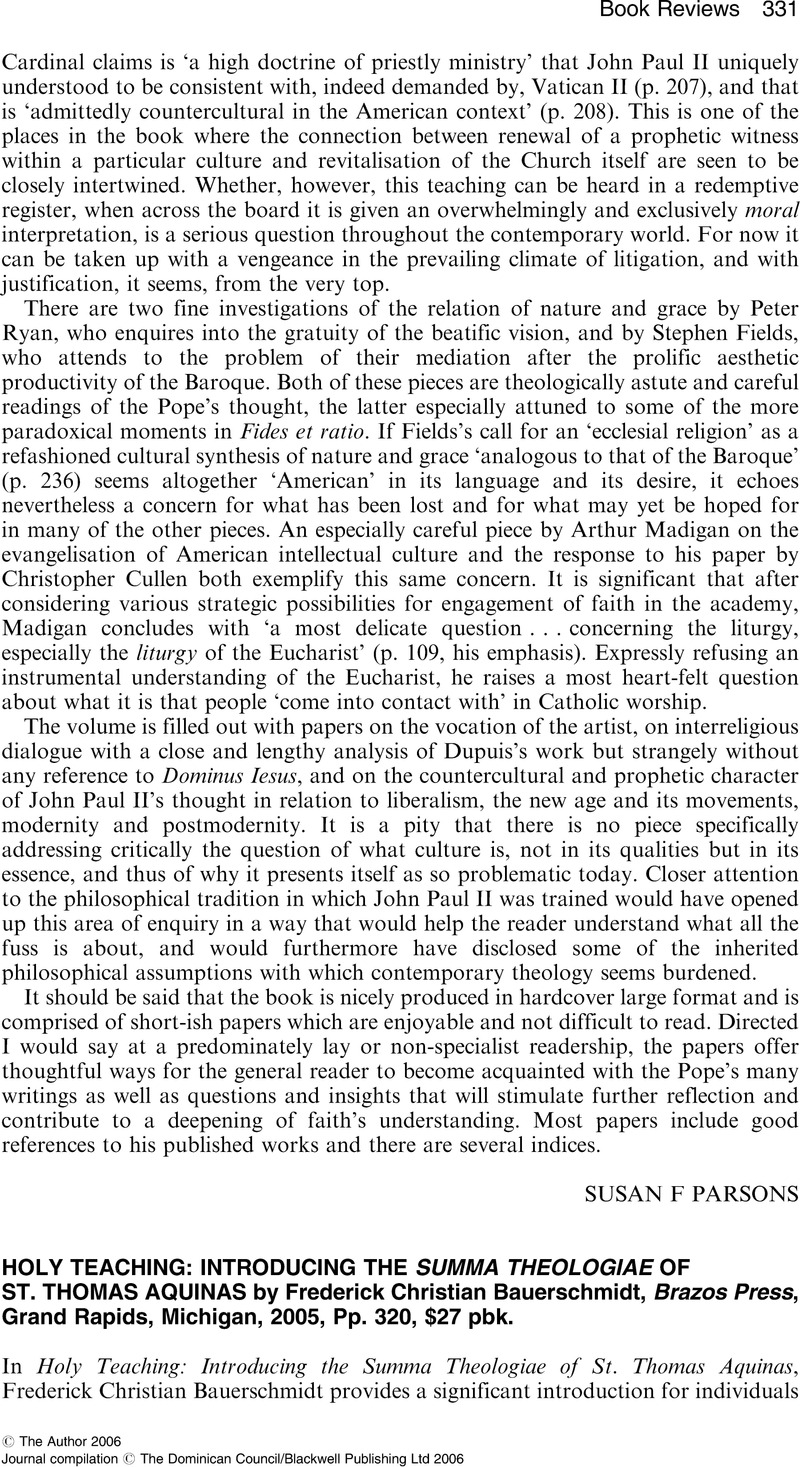No CrossRef data available.
Article contents
Holy Teaching: Introducing The Summa Theologiae of St. Thomas Aquinas by Frederick Christian Bauerschmidt, Brazos Press, Grand Rapids, Michigan, 2005, Pp. 320, $27 pbk.
Review products
Holy Teaching: Introducing The Summa Theologiae of St. Thomas Aquinas by Frederick Christian Bauerschmidt, Brazos Press, Grand Rapids, Michigan, 2005, Pp. 320, $27 pbk.
Published online by Cambridge University Press: 01 January 2024
Abstract
An abstract is not available for this content so a preview has been provided. Please use the Get access link above for information on how to access this content.

- Type
- Reviews
- Information
- Copyright
- © The Author 2006 Journal compilation © The Dominican Council/Blackwell Publishing Ltd 2006


